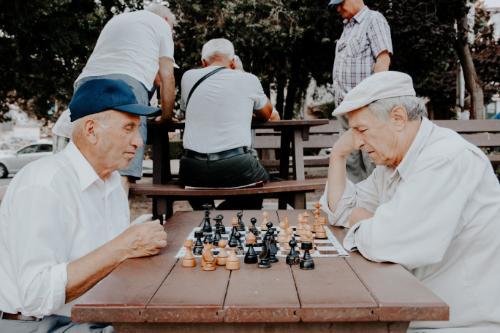Research Blog: Multisensory Perception in older adults prone to falling

Dr Jason Chan and Dr Annalisa Setti talk about their research on Multisensory Perception in older adults.
As many as 70% of years lived with disability in older age can be ascribed to falling and related injuries. Medically speaking, a faller is someone who has suffered a fall, without an external cause (for example, uneven pavement) in the past 5 years. In Ireland, the HSE (Services for Older People) estimates the direct cost of falling in over 65s in Ireland amounts to €161.68 million, accounting for 40.3% of their overall burden €402. This cost does not consider the amount of time and resources taken by those older adults with a fear of future falling (often after fully recovered from a fall).
Therefore, it is paramount to understand the causes of falls and put in place preventative strategies.
Research over the past 20 years has greatly improved our understanding of why older adults fall (without an external cause). However the current interventions only lead to a modest 30% reduction in falls. The current preventions have focused on physical fitness, correction of visual defects, balance training and environmental optimisation. In terms of physical fitness, much of the focus is on walking and balance. However, there are a host of daily activities that older adults may find challenging. The daily activities are aptly call “Activities of Daily Living”. They include walking, but also getting dressed and tying your shoes, carrying the grocery shopping, shaking hands with people, and reaching for objects in a cupboard. Is it possible that falls can also affect these activities? This would suggest that it is not just an issue with their gait, but a general mobility issue.
What can we do to ameliorate the inevitable physical decline as we age? The answer seems obvious, and that is to exercise. While exercise may not eliminate your risk of a fall, the risk is certainly reduced. Resistance training will help to build and maintain muscle. Aerobic exercise will help to improve and maintain cardio‐vascular health. Another way to look at types of exercise is whether it is open‐ or closed‐skilled. Open‐skill exercises are those that do not have a consist rhythm of movement. These exercises can include most competitive sports (e.g., soccer and fencing). Closed-skill exercises are exercises where movements are repetitive (e.g., track running and lap swimming).

Our previous research has demonstrated that open‐skill exercises have a benefit to cognition compared to closed‐skill exercises. We believe this is because there is a more cognitive element to open‐skill exercises.
More recently, cognition has also emerged as a crucial factor in determining falls risk. Work of our lab has also identified differences in multisensory integration between fallers and non‐fallers. Our environment is multisensory. In other worlds, we are constantly using all of our senses to understand and navigate around our environment. Normally, we are able to combine the relevant information from the different senses together, and ignore the irrelevant information. However, in fallers we find that they find it more difficult to determine which information is irrelevant and thus they combine more irrelevant sensory information compared to non‐fallers. Another aim of our research is to see what we can do to reduce the amount of irrelevant information and thus possibly reduce sensory confusion.
If you would like more information or would like to take part in our studies you can contact us at: info@acmelab.science. Our websites are: www.acmelab.science and https://www.ucc.ie/en/apsych/research/.
